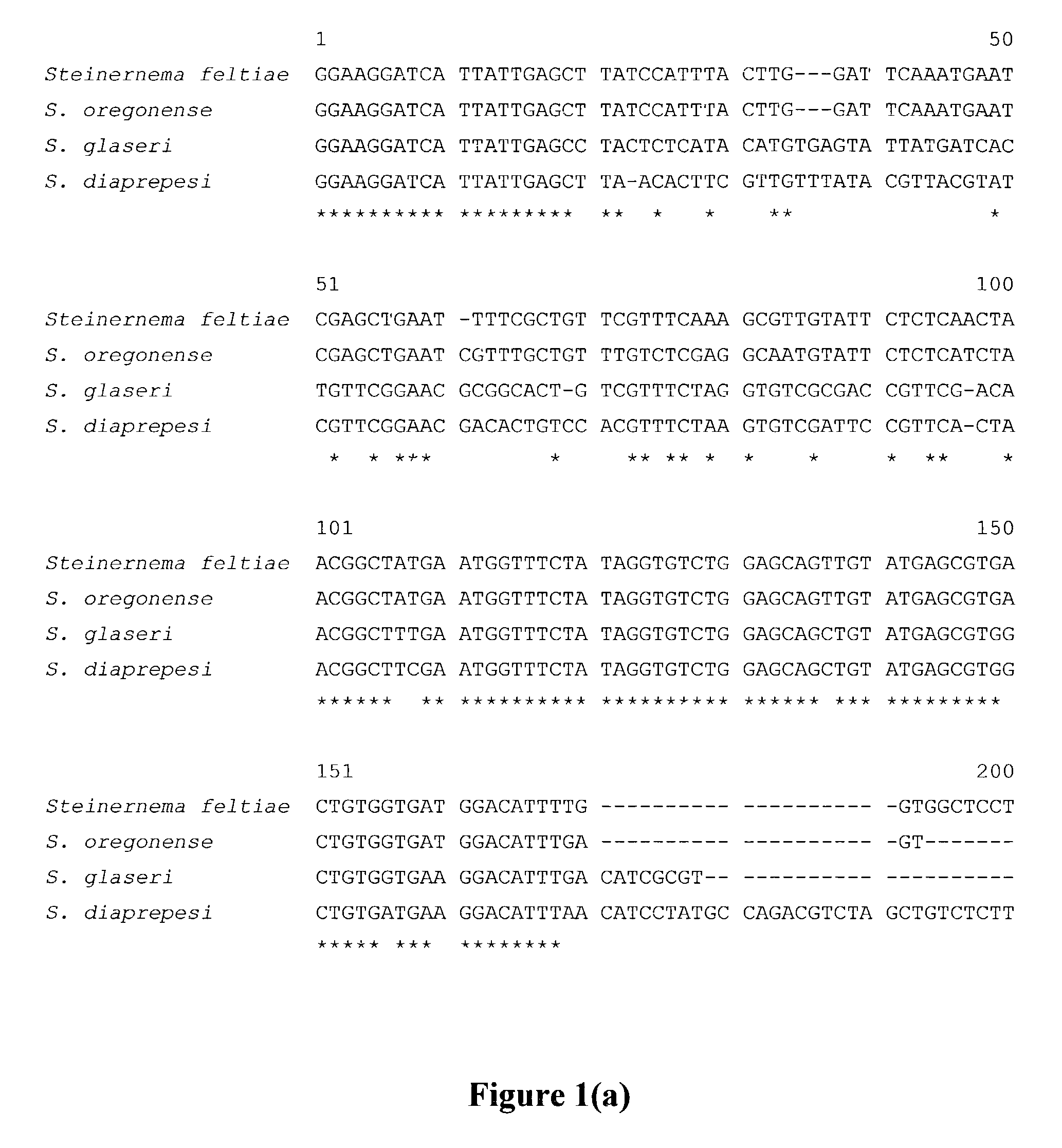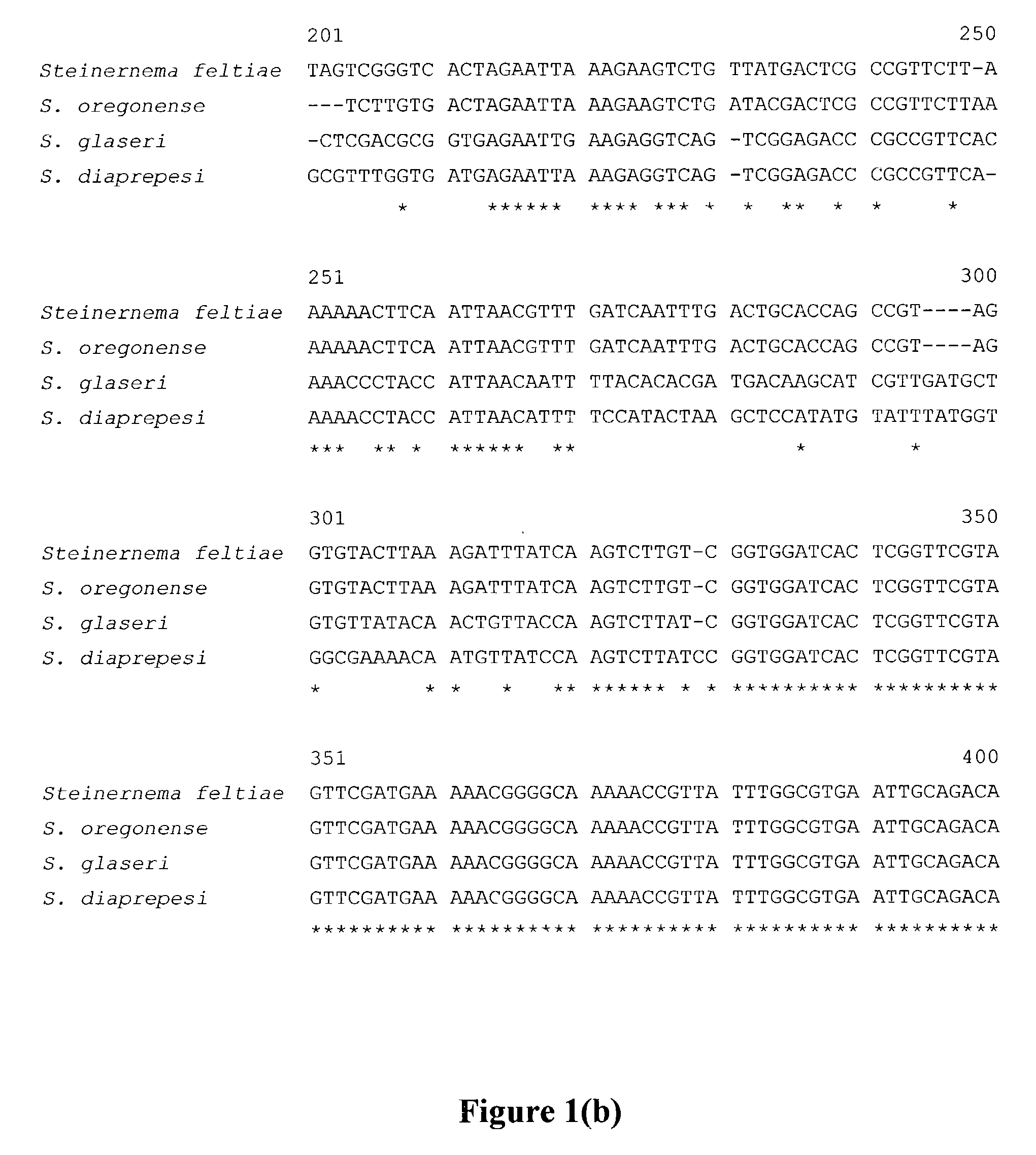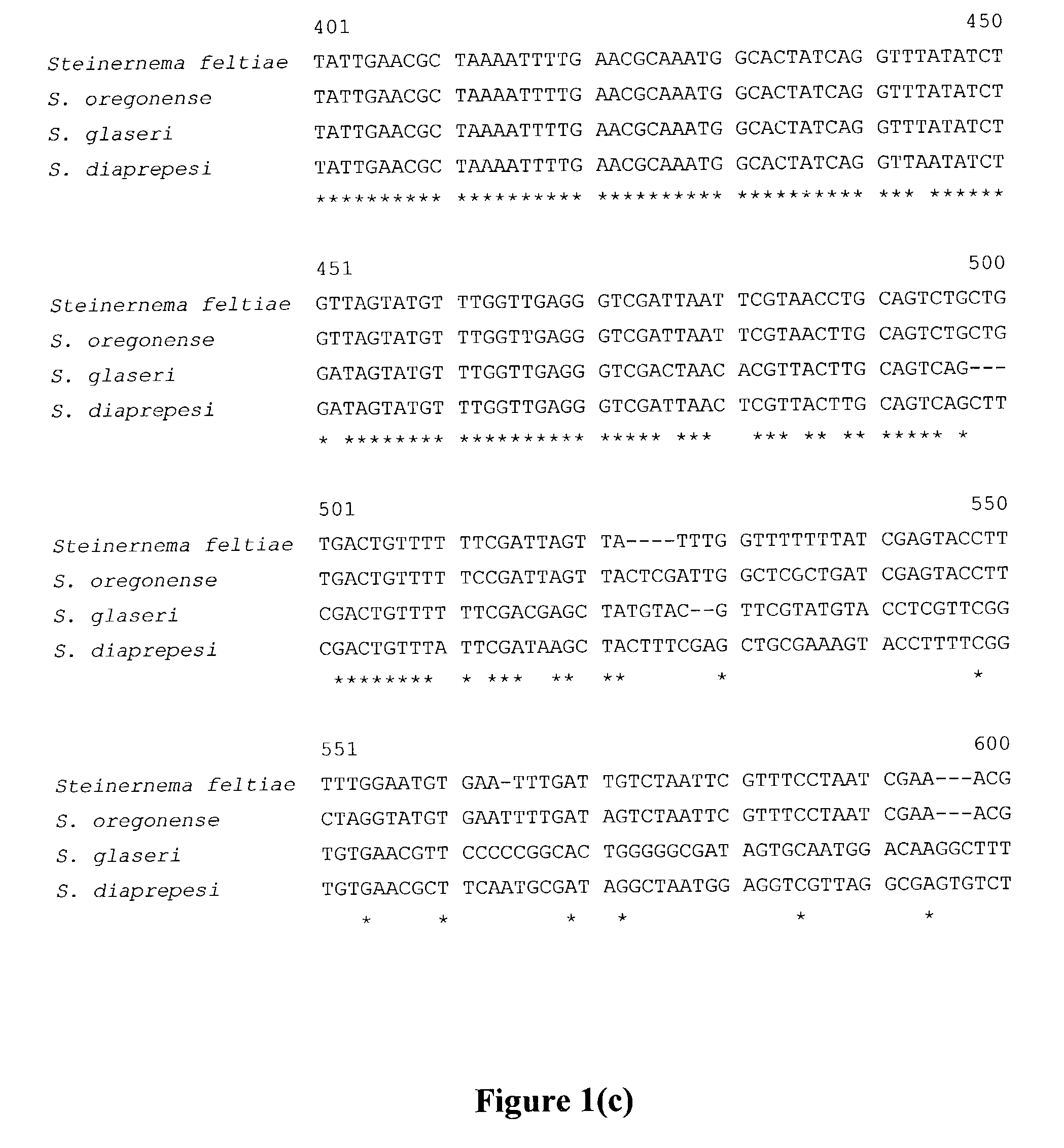Entomopathogenic nematode for control of insect pests
a nematode and nematode technology, applied in the field of entomopathogenic nematodes, can solve the problems of affecting the survival of trees, and affecting the survival rate of trees, so as to improve the suppression rate and the effect of reducing the number of insects
- Summary
- Abstract
- Description
- Claims
- Application Information
AI Technical Summary
Benefits of technology
Problems solved by technology
Method used
Image
Examples
example 1
Nematode Collection and Identification
[0049]Nematodes collected from the field were maintained in the laboratory on Galleria mellonella. First and second-generation adult nematodes were obtained by dissecting infected insects after death at 2–4 days and 5–7 days, respectively. Third-stage infective juveniles (IJ) were obtained when they emerged from the cadavers after 7–10 days. Some nematodes were examined alive, others were killed in warm water (at about 40° C.), and still others were fixed in TAF (Courtney et al., 1955) or lactophenol. The specimens were mounted in glycerine. Coverglass supports were used in all cases to avoid flattening specimens. Nematodes of different stages collected from Diaprepes abbreviatus were also used in this study.
[0050]Scanning electron microscopy: Adults and IJ were fixed in 3% glutaraldehyde buffered with 0.1 M sodium cacodylate at a pH of about 7.2 for 24 hours at about 8° C. (Nguyen & Smart, 1995). They were post-fixed with 2% osmium tetroxide so...
example 2
Nematode Persistence and Natural Control by Nematodes
[0067]The nematode described herein is effective for controlling a variety of insects. Without being limited thereto, pests of particular interest known to be susceptible to treatment are agronomically important insects. This is especially true for the citrus root weevil, and in particular Diaprepes abbreviatus. The nematode may be applied to control these agronomically important insects on a number of crops, non-exclusively including citrus.
[0068]Production of the nematode may be accomplished using in vivo or in vitro techniques known in the art. As described in the Examples herein, Steinernema diaprepesi may be initially recovered from soil samples taken from citrus groves in Polk County, Fla. Following isolation from the environment, the nematodes may then be reared in vivo in susceptible host insects such as Diaprepes abbreviatus or Galleria mellonella, as illustrated in the Examples. In accordance with a preferred embodiment,...
example 3
Application Timing and Frequency
[0076]Recommendations about when and how often to apply entomopathogenic nematodes have been inferred from seasonality of emergence of adult insects from the soil, from estimates of nematode persistence following application from research on physical causes of nematode mortality, and by considering the cost of applying nematodes.
[0077]Time of day is also important when scheduling applications. Nematodes applied beneath the canopy of a tree survive in direct proportion to their proximity to the tree trunk where evaporation of soil moisture and exposure to ultraviolet radiation are least (Duncan et al., 1996) Molyneaux & Bedding, 1984; Faugler & Boush, 1978). Application of nematodes in the evening provides the longest possible time for their establishment before being exposed to desiccation and sunlight.
[0078]Because nematodes attack insects in the soil and show little evidence of significant persistence, nematodes will have the greatest effect if appl...
PUM
 Login to View More
Login to View More Abstract
Description
Claims
Application Information
 Login to View More
Login to View More - R&D
- Intellectual Property
- Life Sciences
- Materials
- Tech Scout
- Unparalleled Data Quality
- Higher Quality Content
- 60% Fewer Hallucinations
Browse by: Latest US Patents, China's latest patents, Technical Efficacy Thesaurus, Application Domain, Technology Topic, Popular Technical Reports.
© 2025 PatSnap. All rights reserved.Legal|Privacy policy|Modern Slavery Act Transparency Statement|Sitemap|About US| Contact US: help@patsnap.com



